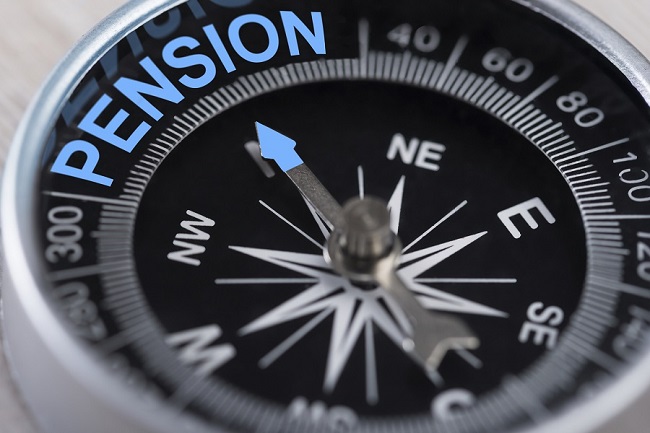 The comptroller's performancewith the pension fund is crucial because New York counts oninvestment returns to cover a big share of the benefits promised toemployees. (Photo: Getty)
The comptroller's performancewith the pension fund is crucial because New York counts oninvestment returns to cover a big share of the benefits promised toemployees. (Photo: Getty)
(Bloomberg) –In New York, one person is responsible for thestate pension's $209 billion, a sum that wouldbe the envy of even Wall Street's biggest money managers.
|But the fund's investment returns under the job's currentoccupant, Comptroller Thomas DiNapoli, have been less exciting,leaving his performance under fire as he campaigns to keep the jobhe's held for the past 11 years.
|New York's Common Retirement Fund, the nation's third-largestpublic pension, returned 6.4 percent after feesfor the 10-year period ending March 31, the end of New York'sfiscal year. That ranks sixth among the 10 biggest U.S. stateretirement systems that had data available forthe period.
|DiNapoli's stewardship of New York's pension is a focus of therace for comptroller, one typically overlooked compared with thegovernor and attorney general contests.
|His Republican opponent, Jonathan Trichter, has said that ifelected he will ban investments in expensive private-equity andhedge funds and wind down those portfolios.
|DiNapoli “would have done much better for New York retirees hadhe passively invested the equity portfolio in S&P indexes,”Trichter said at a debate this month.
|Trichter, a former Democratic operative who secured specialpermission from the Republican Party to run on its ticket, hasworked as a public finance banker at JPMorgan Chase & Co. andat the MAEVA Group, a restructuring firm founded by Harry J.Wilson. Wilson lost the comptroller's race to DiNapoli in 2010.
|With Democrats outnumbering Republicans by more than 2-to-1 inNew York, DiNapoli is favored to be elected to another four-yearterm.
|The comptroller's performance is crucial because New York countson investment returns to cover a big share of the benefits promisedto employees.
|When returns fall short of targets, New York and its localgovernments need to pay more to make up for lost ground. Despitelackluster returns, New York's pension is almost fully-funded,because taxpayer contributions more than doubled during the decadeto make up the gap.
|Like other states, New York has turned to investments likecorporate takeover funds in search of higher returns. While NewYork's $17.5 billion private-equity portfolio has earned anannualized return of 8.3 percent over 10 years, it has lagged itsbenchmark, the Cambridge U.S. Private Equity Index, by 1.5percentage point.
|The state's leveraged buyout, venture capital and “specialsituations” funds trailed the 9.6 percent return of the Russell3000 and 9.5 percent return of the S&P 500.
|Private-equity funds may be expensive, but they help diversifythe fund's portfolio, DiNapoli said at the debate, hosted byManhattan Neighborhood Network. New York's pension paid $515.2million in private-equity related expenses in fiscal 2018.
|“To put all of our money in index funds would be totallyirresponsible,” DiNapoli said. “If we've learned anything from theglobal financial crisis, you have to be diversified.”
|The pension's performance “is right in line,” with other largepublic retirement funds, said Doug Forand, a spokesman for theDiNapoli campaign.
|“Under Comptroller DiNapoli, the state's pension fund bouncedback from the Great Recession, doubling in value to $209.2 billiontoday,” Forand said. “It is one of the strongest and best fundedplans in the nation.”
|The New York fund's public equity and fixed-income investments,which comprise 77 percent of its assets, beat benchmarks over the10-year period, while real estate, which accounts for about 7percent of assets, lagged. Much of the pension's public equitiesallocation is passively invested through indexes, DiNapolisaid.
|The pension has also adopted a more conservative investmentoutlook, DiNapoli said, gradually reducing its assumed rate ofreturn to 7 percent from 8 percent over his tenure.
|And it's in a far stronger position than most pension funds: in2017, it was nearly fully funded, with assets sufficient to coverabout 95 percent of the benefits that have been promised, thethird-best among U.S. states, according to data compiled byBloomberg.
|Of the biggest public pensions, only Georgia's teachers fundexceeded an annual 7 percent gain over the 10 year period, whichincludes the financial crisis and Great Recession. The CaliforniaPublic Employees' Retirement System, the biggest U.S. pension withabout $350 billion in assets, had the worst 10-year returns at 5.4percent.
|The California State Teachers' Retirement System and New York'sTeachers Retirement System, the second and fifth-biggest funds,respectively, didn't provide March 31 returns to Bloomberg.
|DiNapoli has been in office since February 2007, when New York'sLegislature voted to name him Comptroller, replacing Alan Hevesi,who resigned after pleading guilty to using state employees tochauffeur around his disabled wife. Hevesi later pleaded guilty in2010 to participating in a pay-to-play scandal and served more than18 months in prison.
|READ MORE:
|Why Wisconsin's pension fund isworking
|Most employees with pension funds that areunderfunded don't know it
|4 retirement plan sponsors with pensionwoes
|Copyright 2018 Bloomberg. All rightsreserved. This material may not be published, broadcast, rewritten,or redistributed.
Complete your profile to continue reading and get FREE access to BenefitsPRO, part of your ALM digital membership.
Your access to unlimited BenefitsPRO content isn’t changing.
Once you are an ALM digital member, you’ll receive:
- Critical BenefitsPRO information including cutting edge post-reform success strategies, access to educational webcasts and videos, resources from industry leaders, and informative Newsletters.
- Exclusive discounts on ALM, BenefitsPRO magazine and BenefitsPRO.com events
- Access to other award-winning ALM websites including ThinkAdvisor.com and Law.com
Already have an account? Sign In
© 2024 ALM Global, LLC, All Rights Reserved. Request academic re-use from www.copyright.com. All other uses, submit a request to [email protected]. For more information visit Asset & Logo Licensing.








